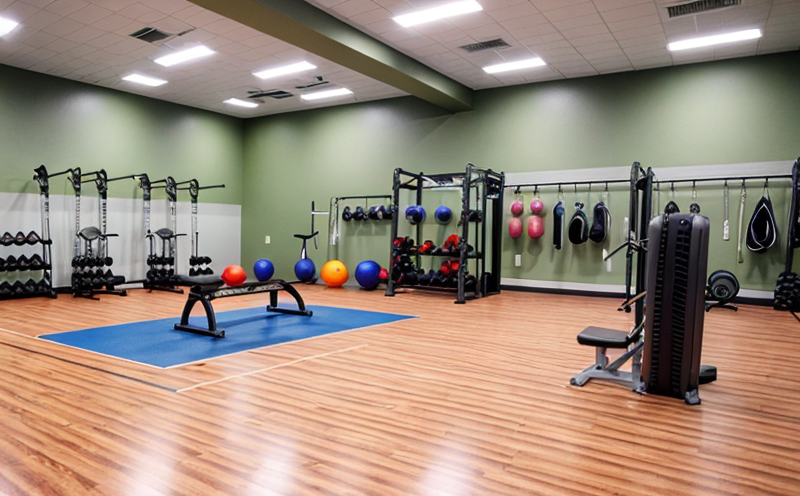Vibration Testing of Exercise Equipment
The vibration testing of exercise equipment is a critical service within Consumer Products & Product Safety Testing, specifically tailored to ensure that sporting goods and fitness equipment meet strict safety standards. This testing helps manufacturers identify potential weak points in their products that could cause harm or failure under typical use conditions.
When performing vibration tests on exercise equipment such as treadmills, elliptical trainers, stationary bicycles, rowing machines, and other similar devices, the focus is to evaluate how these products withstand repeated movements and impacts. This testing ensures the structural integrity of the frame, components like the motor and bearings, and the overall durability of the product.
The vibration test involves subjecting the exercise equipment to controlled vibratory forces that simulate real-world usage scenarios. The goal is to determine if there are any signs of damage or failure after exposure to these forces. This service is particularly important for consumer products where safety and reliability are paramount, as it helps prevent accidents and recalls.
Standards such as ISO 12263:2005 and ASTM F2789-14 provide guidelines for vibration testing of exercise equipment. These standards ensure that the testing methods used are consistent with industry best practices and regulatory requirements. Compliance with these standards can be a deciding factor in product certification, ensuring that your exercise equipment meets or exceeds safety expectations.
| Application | Description |
|---|---|
| Treadmills | Testing the frame and motor for durability under constant motion. |
| Elliptical Trainers | Evaluating the stability of the machine during high-intensity exercise. |
| Stationary Bicycles | Ensuring the frame and bearings can withstand continuous pedaling. |
| Rowing Machines | Testing for durability of the moving parts during repetitive use. |
Industry Applications
- Treadmills: Ensuring the frame and motor can withstand constant motion without failure.
- Elliptical Trainers: Evaluating stability during high-intensity exercise to prevent user injury.
- Stationary Bicycles: Checking that frames and bearings are durable under continuous pedaling.
- Rowing Machines: Testing for durability of moving parts during repetitive use.
Why Choose This Test
- Vibration testing ensures the long-term reliability and safety of exercise equipment, reducing the risk of product failure or accidents.
- The results from vibration tests can be used to improve design and manufacturing processes, leading to better-performing products.
- Compliance with industry standards such as ISO 12263:2005 and ASTM F2789-14 enhances the reputation of your product in the market.
In addition to these benefits, vibration testing also helps manufacturers stay ahead of regulatory changes. By proactively addressing potential issues through rigorous testing, companies can avoid costly recalls and negative publicity that come with non-compliance.
Customer Impact and Satisfaction
The impact of vibration testing extends beyond the product itself. It influences customer satisfaction by ensuring that consumers have safe, reliable exercise equipment at their disposal. This, in turn, enhances brand loyalty and trust. Additionally, meeting safety standards can lead to increased market share as customers are more likely to choose products that they perceive as safer.
Manufacturers who invest in vibration testing also benefit from reduced warranty claims and product returns. By identifying and addressing potential issues early in the development process, companies can significantly lower their costs associated with customer service and repairs.





